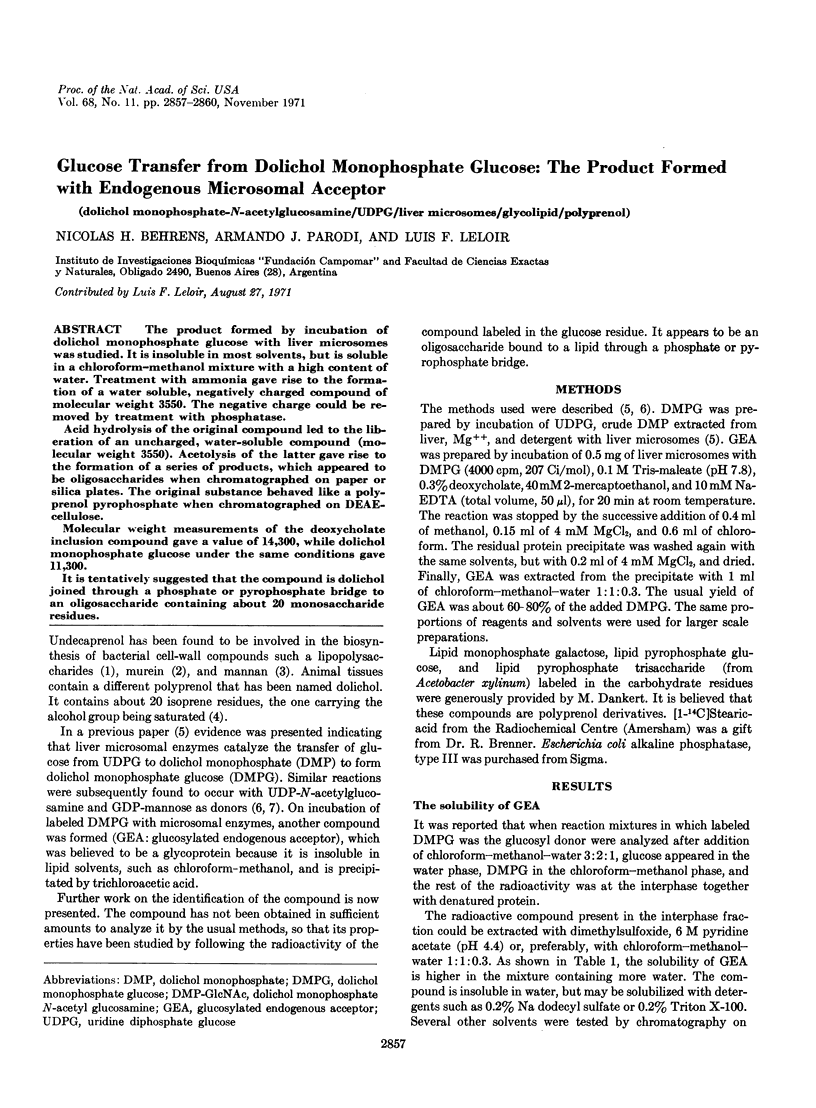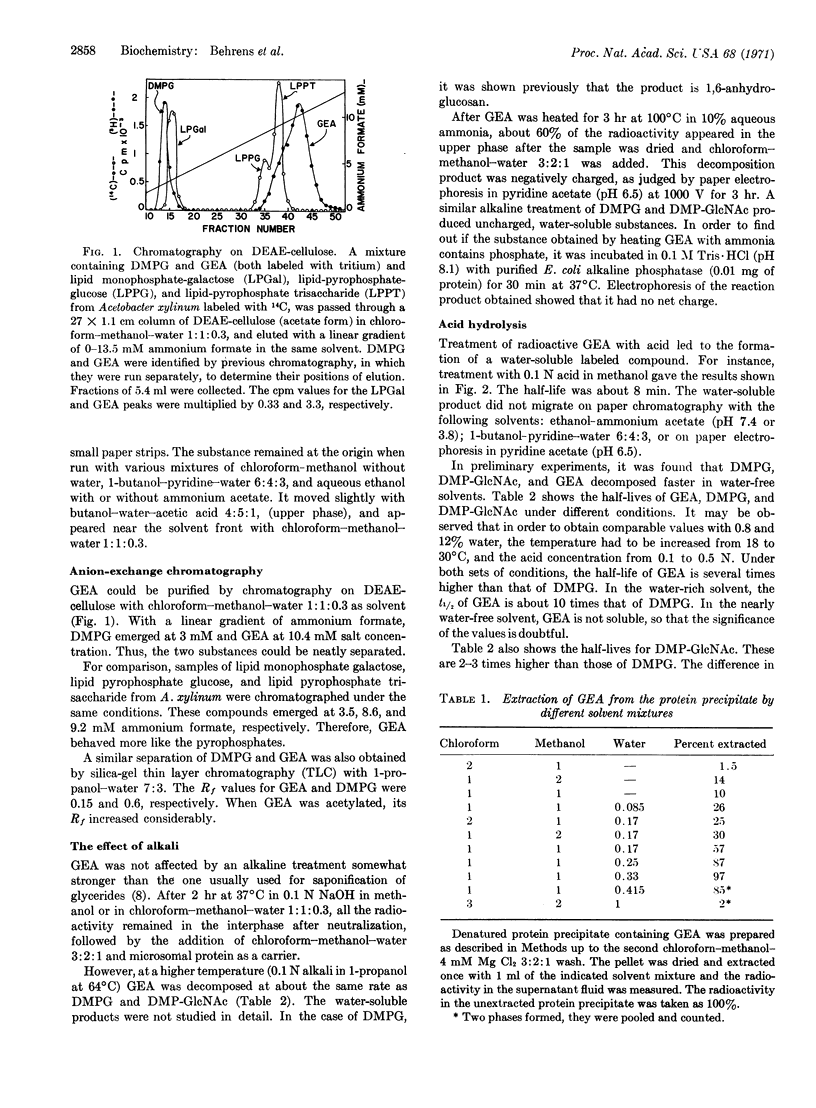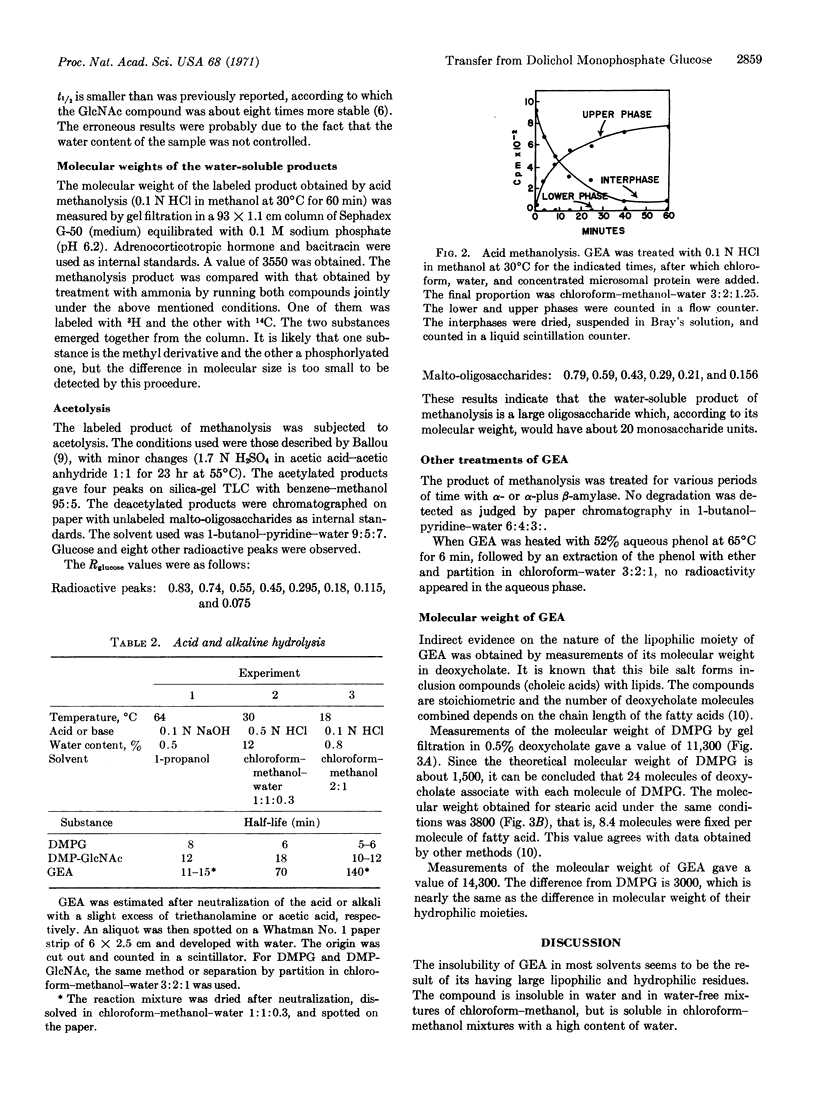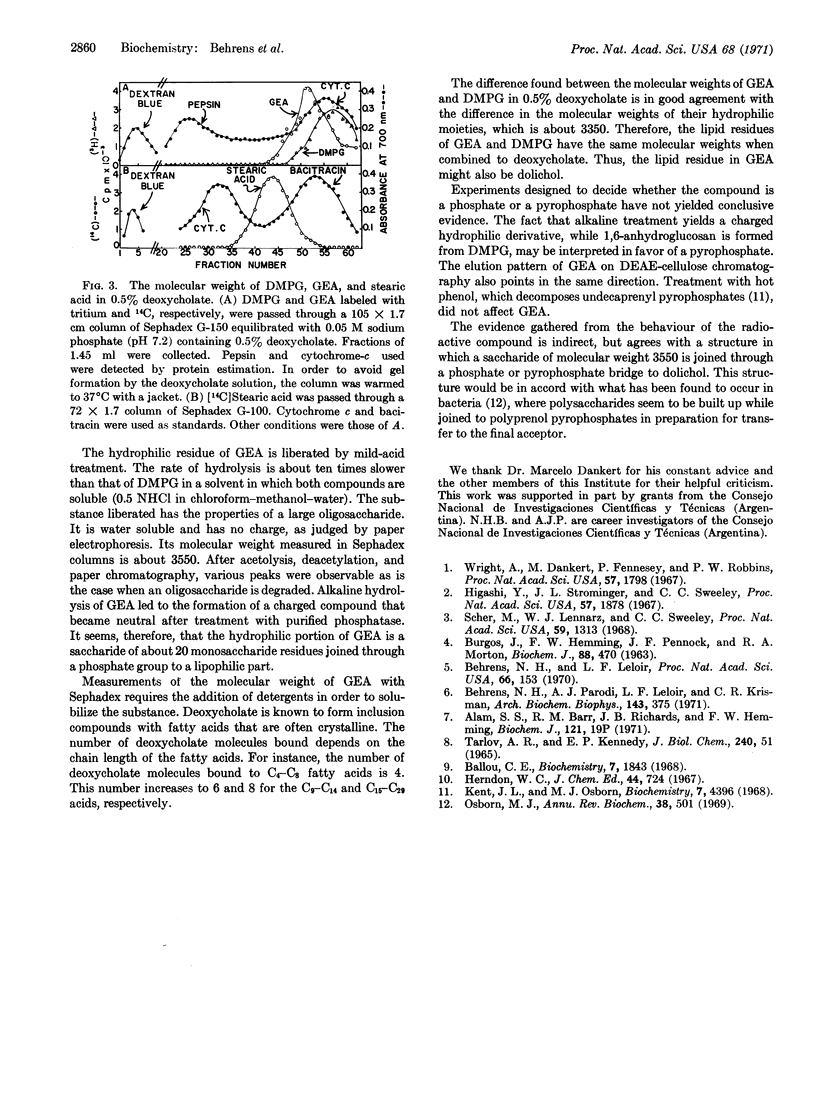Abstract
The product formed by incubation of dolichol monophosphate glucose with liver microsomes was studied. It is insoluble in most solvents, but is soluble in a chloroform-methanol mixture with a high content of water. Treatment with ammonia gave rise to the formation of a water soluble, negatively charged compound of molecular weight 3550. The negative charge could be removed by treatment with phosphatase.
Acid hydrolysis of the original compound led to the liberation of an uncharged, water-soluble compound (molecular weight 3550). Acetolysis of the latter gave rise to the formation of a series of products, which appeared to be oligosaccharides when chromatographed on paper or silica plates. The original substance behaved like a polyprenol pyrophosphate when chromatographed on DEAE-cellulose.
Molecular weight measurements of the deoxycholate inclusion compound gave a value of 14,300, while dolichol monophosphate glucose under the same conditions gave 11,300.
It is tentatively suggested that the compound is dolichol joined through a phosphate or pyrophosphate bridge to an oligosaccharide containing about 20 monosaccharide residues.
Keywords: dolichol monophosphate-N-acetylglucosamine, UDPG, liver microsomes, glycolipid, polyprenol
Full text
PDF



Selected References
These references are in PubMed. This may not be the complete list of references from this article.
- Alam S. S., Barr R. M., Richards J. B., Hemming F. W. Prenol phosphates and mannosyltransferases. Biochem J. 1971 Jan;121(1):19P–19P. doi: 10.1042/bj1210019p. [DOI] [PMC free article] [PubMed] [Google Scholar]
- BURGOS J., HEMMING F. W., PENNOCK J. F., MORTON R. A. DOLICHOL: A NATURALLY-OCCURRING C100 ISOPRENOID ALCOHOL. Biochem J. 1963 Sep;88:470–482. [PMC free article] [PubMed] [Google Scholar]
- Behrens N. H., Leloir L. F. Dolichol monophosphate glucose: an intermediate in glucose transfer in liver. Proc Natl Acad Sci U S A. 1970 May;66(1):153–159. doi: 10.1073/pnas.66.1.153. [DOI] [PMC free article] [PubMed] [Google Scholar]
- Behrens N. H., Parodi A. J., Leloir L. F., Krisman C. R. The role of dolichol monophosphate in sugar transfer. Arch Biochem Biophys. 1971 Apr;143(2):375–383. doi: 10.1016/0003-9861(71)90224-4. [DOI] [PubMed] [Google Scholar]
- Higashi Y., Strominger J. L., Sweeley C. C. Structure of a lipid intermediate in cell wall peptidoglycan synthesis: a derivative of a C55 isoprenoid alcohol. Proc Natl Acad Sci U S A. 1967 Jun;57(6):1878–1884. doi: 10.1073/pnas.57.6.1878. [DOI] [PMC free article] [PubMed] [Google Scholar]
- Kent J. L., Osborn M. J. Properties of the O-specific hapten formed in vivo by mutant strains of Salmonella typhimurium. Biochemistry. 1968 Dec;7(12):4396–4408. doi: 10.1021/bi00852a036. [DOI] [PubMed] [Google Scholar]
- Osborn M. J. Structure and biosynthesis of the bacterial cell wall. Annu Rev Biochem. 1969;38:501–538. doi: 10.1146/annurev.bi.38.070169.002441. [DOI] [PubMed] [Google Scholar]
- Scher M., Lennarz W. J., Sweeley C. C. The biosynthesis of mannosyl-1-phosphoryl-polyisoprenol in Micrococcus lysodeikticus and its role in mannan synthesis. Proc Natl Acad Sci U S A. 1968 Apr;59(4):1313–1320. doi: 10.1073/pnas.59.4.1313. [DOI] [PMC free article] [PubMed] [Google Scholar]
- Stewart T. S., Mendershausen P. B., Ballou C. E. Preparation of a mannopentaose, mannohexaose, and mannoheptaose from Saccharomyces cerevisiae mannan. Biochemistry. 1968 May;7(5):1843–1854. doi: 10.1021/bi00845a032. [DOI] [PubMed] [Google Scholar]
- Wright A., Dankert M., Fennessey P., Robbins P. W. Characterization of a polyisoprenoid compound functional in O-antigen biosynthesis. Proc Natl Acad Sci U S A. 1967 Jun;57(6):1798–1803. doi: 10.1073/pnas.57.6.1798. [DOI] [PMC free article] [PubMed] [Google Scholar]


